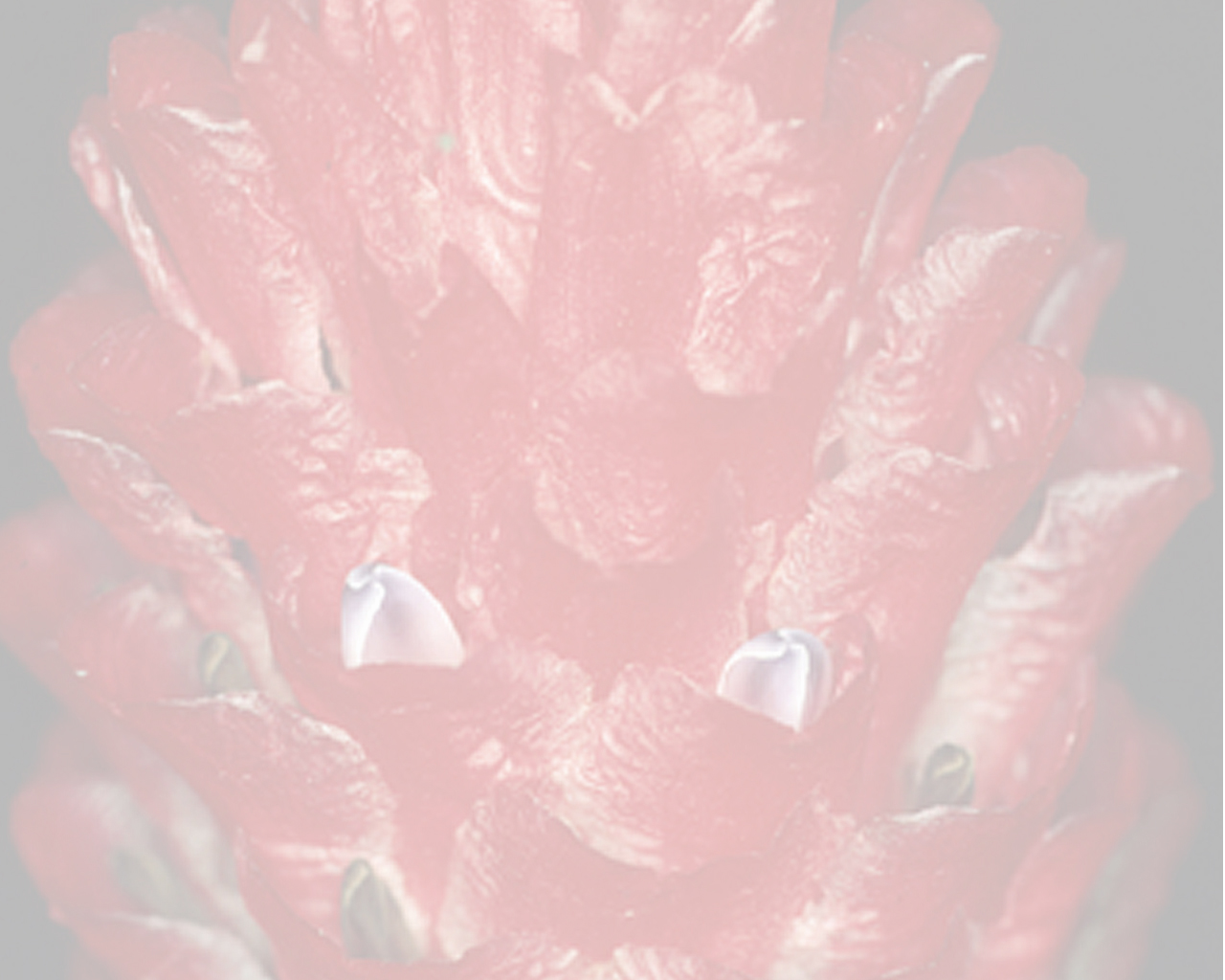Quesnelia strobilospica Wawra
Taxonomic Change:
- As Quesnelia strobilispica Wawra considered a synonym of Quesnelia blanda (Schott ex Beer) Mez —See Smith & Downs 1979 p. 1967
- Resurrected the species from synonym and a Neotype designated: tab. 25 in Wawra, It. Sax. Cob. 1883 [Wawra II-273 (Holotype - W, lost)]. —See Vieira 2006 p. 52
Literature references:
*move your mouse pointer over the page numbers to see comment
Comments:
- 'sttrobilospica' should be corrected to 'strobilispica' (from 'strobilus' see ICN 60.10) (Personal communication with Gea Zijlstra)
- Ecological data: Plants rupicolous, epiphytic or less frequently terrestrial, occuring mainly in the southeast portion of the Atlantic Pluvial Forest, at altitudes from 700 to 1300 m/s.m., and occasionally in the seasonal semideciduous forests, at altitudes about 1300 m/s.m. —See Vieira 2006
- Beer (1857), when describing Anoplophytum strobilanthum, made brief considerations about the possible identity of a herbarium material collected by Schott, under the name Bromelia blanda. Expressing his doubts regarding this material being a synonym of Anoplophytum strobilanthum, this author refrained from taking a position regarding the plant collected by Schott.
Since no description or print was provided for Bromelia blanda, this name therefore constitutes an invalidly published name, according to the International Code of Botanical Nomenclature (Greuter et al., 1994). The taxon described by Mez (1892) should therefore be correctly cited as Quesnelia blanda Schott ex Mez. However, according to the rules established by the International Code of Botanical Nomenclature (Greuter et al., 1994), this name is illegitimate, since in his original work, Mez included the holotype (Wawra II-273) of the previous validly published name Quesnelia strobilispica Wawra. The correct name to be applied is therefore Quesnelia strobilispica , described by Wawra (1880) based on material collected by the author during his second trip to Brazil in 1879. Although the type of this taxon (Wawra II-273), included in the herbarium of the Natural History Museum in Vienna, has been lost (Smith et Downs, 1979; Till, 1994, and recent pers. com.), the print later provided by Wawra (1883) (Fig. 23c), based on material from this trip, represents an excellent substitute for it and is here designated as the neotype. The type material of Q. strobilispica was collected in the hillside forests of the municipality of Cantagalo, in the mountainous region of the state of Rio de Janeiro (Wawra, 1880, 1881, 1883). The last collections of this species for the typical locality date back to the last century, and there have been no subsequent records since then. In the state of Rio de Janeiro, the recently collected specimens that best fit the description and neotype of Q. strobilispica were observed in the Macaé de Cima Ecological Reserve, in the municipality of Nova Friburgo. In general, the examination of in loco plants and herborized material from different geographic areas revealed considerable morphological variation related mainly to the dimensions of the inflorescences, number and dimensions of floral bracts and flowers. It was observed that cultivated and herborized specimens from the montane formations from the central-eastern region of the state, in Santa Maria Madalena, tend to present larger inflorescences with a greater number of floral bracts and flowers, in addition to floral bracts and flowers with slightly larger dimensions in relation to specimens from other locations. The observation of living and herborized specimens from the central portion of the state of Espírito Santo and the southeast of Minas Gerais reveals some morphological differences in relation to plants from the state of Rio de Janeiro, especially because they present inflorescences with lower floral bracts as a rule. much larger than the upper ones, covering a good part of the inflorescence, and with a markedly pink coloration. At the current stage of knowledge, it is not possible to attribute another more appropriate name to the specimens from these regions. However, in view of the morphological differences observed, associated with the apparently disjunct distribution of these populations, it is likely that the range of variation found in this group will require the creation of new specific and/or infraspecific taxa in the future, which in this dissertation was considered premature considering given the need to gain a deeper understanding of the extent of the distribution area and the spectrum of morphological variation of the group at an inter- and intra-population level. Quesnelia strobilispica has a greater affinity with Q. lateralis and Q. seideliana. These species share several common characteristics, relating to the general pattern of the inflorescence, shape and consistency of the floral bracts, shape and color of the petals, petal appendages, stamens and pollen morphology. It is also close to Quesnelia kautskyi, a species found in the states of Espírito Santo and Minas Gerais (Vieira, 1999a). Despite the morphological variation exhibited by Q. strobilispica, it is easy to distinguish it from these species by the set of characters related to the shape and size of the inflorescence, color of the floral bracts and number of flowers. Special attention should be given to the in situ and ex situ preservation of Q. strobilispica, given its fragmented distribution area and the potential threat posed by extractivism and alteration of the mountain environments inhabited by this species. —See Vieira 2006 p. 52

